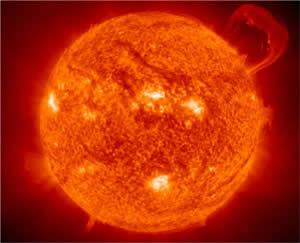
QED INDUCED SOLAR FUSION
Space Charge
Space charge in the polyethylene (PE) insulation of power cables is reduced by adding UV stabilizers to PE during extrusion. Common UV blockers are carbon black and Tinuvin, or the like. Experimental data is presented that shows carbon nanotubes (<?CNT) as the UV blocker in ultra high molecular weight (UHMW) significantly improves the stress-strain properties.
Laser Induced Incandescence
Currently, the size of submicron soot particles in diesel engine exhaust is inferred from the cooling rate following the high particle temperatures produced by laser induced incandescence (<?
Quantum Dots and Multiphoton Processes
The dramatic increase of electron yield in quantum dots (QD) over that in the bulk is explained by the conversion of non-radiative photon absorption into thermal kT energy and attendant IR radiation that in nanoscale structures is suppressed, the loss of suppressed IR conserved by a gain at the EM resonant frequency of the QD, typically for Planck energy > 20 eV. By photoluminescence, the VUV produces instantaneous excitons consistent with experiment, thereby obviating the need for the current explanation of high QD efficiency based on successive impact ionization with attendant time delays Extensions are made to an alternative to molecular dissociation by multphoton IR radiation.
Sonoluminescence
Recently,
QED Induced Solar Fusion
Neutron yield in laser induced fusion in sprays of submicron heavy water droplets is limited by the lack of confinement of the Coulomb explosion. Providing a glass shell to encapsulate the droplet provides the containment necessary to increase the pressure and increase yield. But laser fusion theory based on implosion of the shell would destroy the shell prior to the initiation of the nuclear reaction. Argument is presented that the increase in temperature by laser heating in the prior art is no longer applicable for submicron heavy water droplets. In fact, QED limits the amount of thermal energy necessary to conserve the absorbed laser irradiation. Thus, the glass shell remains intact briefly, at least until the fusion reaction is initiated, at which time the shell vaporizes.